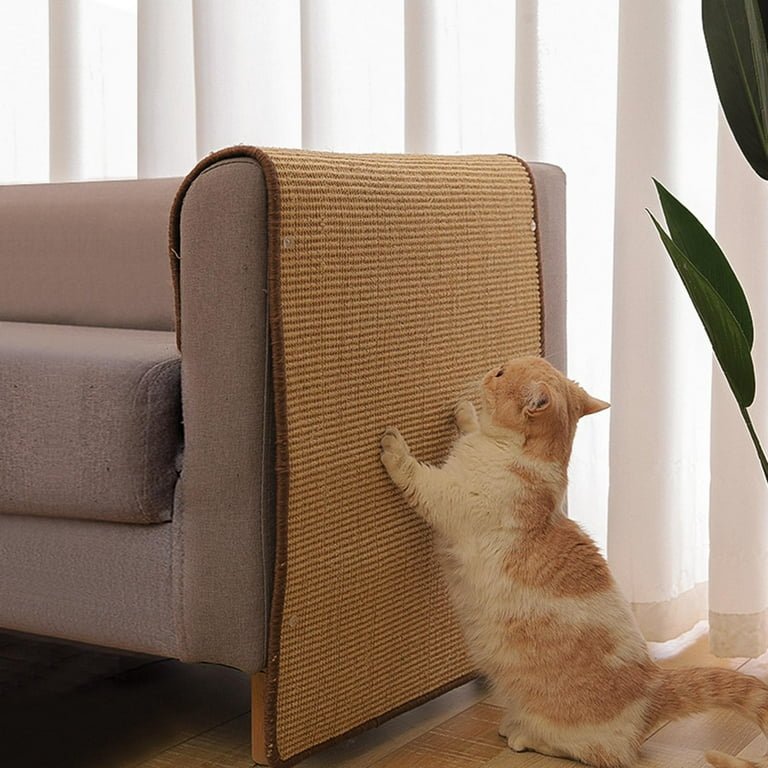Eco-Friendly Furniture Options For Tiny Houses: A Sustainable Solution
Looking for Eco-Friendly Furniture Options For Tiny Houses? Look no further! We’ve got you covered with a selection of sustainable and space-saving furniture ideas that are perfect for tiny homes.
From multifunctional pieces to upcycled materials, there are plenty of stylish and environmentally friendly options to choose from. So, whether you’re looking to maximize your space or reduce your carbon footprint, read on to discover some eco-friendly furniture options for tiny houses.
What are some eco-friendly furniture options for tiny houses?
Living in a tiny house offers many benefits, such as reduced environmental impact and lower maintenance costs. However, finding the right furniture that fits the limited space while also being eco-friendly can be a challenge. Fortunately, there are numerous sustainable furniture options available that are perfect for tiny houses. In this article, we will explore a variety of eco-friendly furniture options that not only maximize space but also minimize the ecological footprint. From multi-functional furniture to repurposed and sustainable materials, let’s dive into the world of eco-conscious furnishing for tiny houses.
The Importance of Eco-Friendly Furniture
Choosing eco-friendly furniture for your tiny house is a crucial step towards sustainable living. Here’s why:
1. Reducing Environmental Impact: Eco-friendly furniture is made from sustainable materials, often using renewable resources. By opting for such furniture, you contribute to the preservation of forests and reduce the depletion of natural resources. Additionally, eco-friendly furniture is typically manufactured using energy-efficient processes, further minimizing its environmental impact.
2. Healthier Living Environment: Traditional furniture often contains harmful chemicals, such as volatile organic compounds (VOCs) and formaldehyde. Eco-friendly furniture, on the other hand, is made with non-toxic materials, ensuring a healthier indoor environment for you and your family.
3. Durability and Longevity: Eco-friendly furniture is designed to last. High-quality sustainable materials, combined with superior craftsmanship, result in furniture that withstands wear and tear. Investing in durable furniture reduces the need for replacements, ultimately reducing waste.
Multi-Functional Furniture for Tiny Spaces
When it comes to furnishing tiny houses, multi-functional furniture is a game-changer. These versatile pieces can serve multiple purposes, maximizing your space while providing functionality. Here are some popular options:
1. Sofa Beds: Sofa beds are an excellent choice for tiny living spaces. During the day, they serve as comfortable seating, and at night, they transform into cozy beds. Look for sofa beds with storage compartments underneath for additional space-saving benefits.
2. Murphy Beds: Murphy beds, also known as wall beds, are designed to fold up against the wall when not in use. They provide ample sleeping space without sacrificing valuable floor space. Some modern Murphy bed designs even offer integrated desks or shelving units.
3. Convertible Tables: Convertible tables provide flexibility in a tiny house. They can function as coffee tables, dining tables, and even workspaces. Look for models with adjustable height and expandable surfaces to accommodate different activities.
Sustainable Materials for Furniture
Opting for furniture made from sustainable materials is another eco-friendly choice for your tiny house. Consider the following options:
1. Bamboo: Bamboo is a fast-growing grass that can be harvested sustainably. It is a durable and stylish option for furniture, offering strength comparable to hardwood. Look for bamboo furniture certified by organizations such as the Forest Stewardship Council (FSC) to ensure responsible sourcing.
2. Reclaimed Wood: Reclaimed wood is salvaged from old buildings, barns, or other sources and repurposed into unique furniture pieces. By giving new life to discarded wood, you contribute to waste reduction and add character to your tiny home.
3. Recycled Plastic: Furniture made from recycled plastic is an innovative way to reduce plastic waste. Look for high-density polyethylene (HDPE) furniture, as it is made from post-consumer plastic and is highly durable, weather-resistant, and easy to clean.
4. Cork: Cork is a renewable and biodegradable material that can be used for various furniture pieces, such as chairs and tables. Cork is harvested from the bark of cork oak trees without harming them, making it an environmentally friendly choice.
Minimalistic and Compact Designs
In tiny houses, every inch of space matters. Choosing furniture with minimalistic and compact designs helps optimize the available area. Consider the following design ideas:
1. Built-in Storage: Select furniture pieces with built-in storage options, such as beds with drawers underneath or ottomans with hidden compartments. These functional designs allow you to hide away your belongings and keep your tiny home clutter-free.
2. Foldable and Stackable Furniture: Foldable chairs, collapsible tables, and stackable stools are excellent space-saving options for tiny houses. They can be easily stored away when not in use, freeing up valuable floor space.
3. Floating Shelves: Instead of bulky bookshelves, opt for floating shelves. These minimalist shelves can be mounted on walls, providing storage space for books, decor, and other essentials without taking up floor space.
Upcycled and Repurposed Furniture
Giving new life to old furniture through upcycling and repurposing is an eco-friendly way to furnish your tiny house. Some ideas include:
1. Vintage and Thrift Store Finds: Explore local vintage and thrift stores to find unique furniture pieces with character. With a bit of creativity and refurbishment, you can transform these old treasures into one-of-a-kind additions to your tiny home.
2. DIY Projects: Embark on do-it-yourself projects to repurpose old furniture or create new pieces from reclaimed materials. From turning wooden pallets into coffee tables to transforming old doors into dining tables, the possibilities are endless.
3. Reupholstering: Rather than discarding old chairs or sofas, consider reupholstering them with sustainable fabrics. This not only gives the furniture a fresh look but also helps reduce waste.
Eco-Friendly Mattress Options
Choosing an eco-friendly mattress is crucial for a good night’s sleep while supporting sustainable practices. Consider the following options:
1. Organic Cotton: Mattresses made from organic cotton are free from synthetic materials, harmful chemicals, and pesticides. They are breathable, hypoallergenic, and biodegradable.
2. Natural Latex: Natural latex mattresses are derived from rubber tree sap and are free from synthetic materials. They offer excellent support, durability, and are resistant to dust mites and mold.
3. Hemp Mattresses: Hemp is a sustainable and fast-growing plant that can be turned into comfortable mattresses. It requires minimal water and pesticides to grow, making it an environmentally friendly choice.
4. Wool: Wool mattresses provide natural insulation, moisture-wicking properties, and are resistant to dust mites and mold. Look for mattresses made from ethically sourced wool.
Top Transforming & Multifunctional Furniture Ideas For Tiny Homes
Frequently Asked Questions
What are some eco-friendly furniture options for tiny houses?
Here are some eco-friendly furniture options that are ideal for tiny houses:
1. What are some space-saving furniture options for tiny houses?
Multi-functional furniture, such as sofa beds, foldable tables, and storage ottomans, are great space-saving options for tiny houses. These pieces of furniture serve dual purposes and can help maximize limited space.
2. Are there any sustainable materials used in eco-friendly furniture?
Yes, there are several sustainable materials commonly used in eco-friendly furniture, including bamboo, reclaimed wood, recycled plastics, and organic fabrics. These materials are renewable, have a lower impact on the environment, and help reduce waste.
3. How can I make my own eco-friendly furniture for a tiny house?
You can incorporate eco-friendly practices by upcycling or repurposing old furniture. By using salvaged materials or transforming existing furniture, you can create unique and sustainable pieces for your tiny house without contributing to additional waste.
4. Where can I find eco-friendly furniture for tiny houses?
There are numerous retailers and online platforms that specialize in eco-friendly and sustainable furniture. Some popular options include sustainable furniture stores, local thrift shops, and online marketplaces that offer a wide range of eco-friendly furniture options suitable for tiny houses.
5. Are there specific certifications or labels to look for when buying eco-friendly furniture?
Yes, when purchasing eco-friendly furniture, look for certifications such as Forest Stewardship Council (FSC) certification, which ensures that the wood used is responsibly sourced. Additionally, labels such as Greenguard or Oeko-Tex indicate that the furniture meets specific environmental and health standards.
6. How can I ensure the eco-friendliness of the furniture I choose?
To ensure the eco-friendliness of the furniture you choose, consider factors like the materials used, manufacturing processes, and the overall lifespan of the product. Look for furniture that is made from sustainable materials, produced using environmentally-friendly methods, and designed to withstand long-term use.
7. Can I customize eco-friendly furniture to fit my tiny house’s design?
Absolutely! Many eco-friendly furniture options can be customized to fit your tiny house’s design and space requirements. You can often choose from a variety of materials, sizes, and configurations to ensure the furniture fits perfectly into your tiny home while still maintaining its eco-friendly qualities.
Final Thoughts
exploring eco-friendly furniture options for tiny houses is essential for sustainable living. Incorporating multifunctional pieces like convertible sofas and folding tables maximize space utilization. Opting for materials such as reclaimed wood, bamboo, or recycled plastic contributes to reducing the environmental impact. Additionally, choosing furniture with low or no VOC finishes ensures better indoor air quality. Embracing eco-friendly furniture options for tiny houses not only promotes a greener lifestyle but also enables homeowners to create a comfortable and functional living space.


